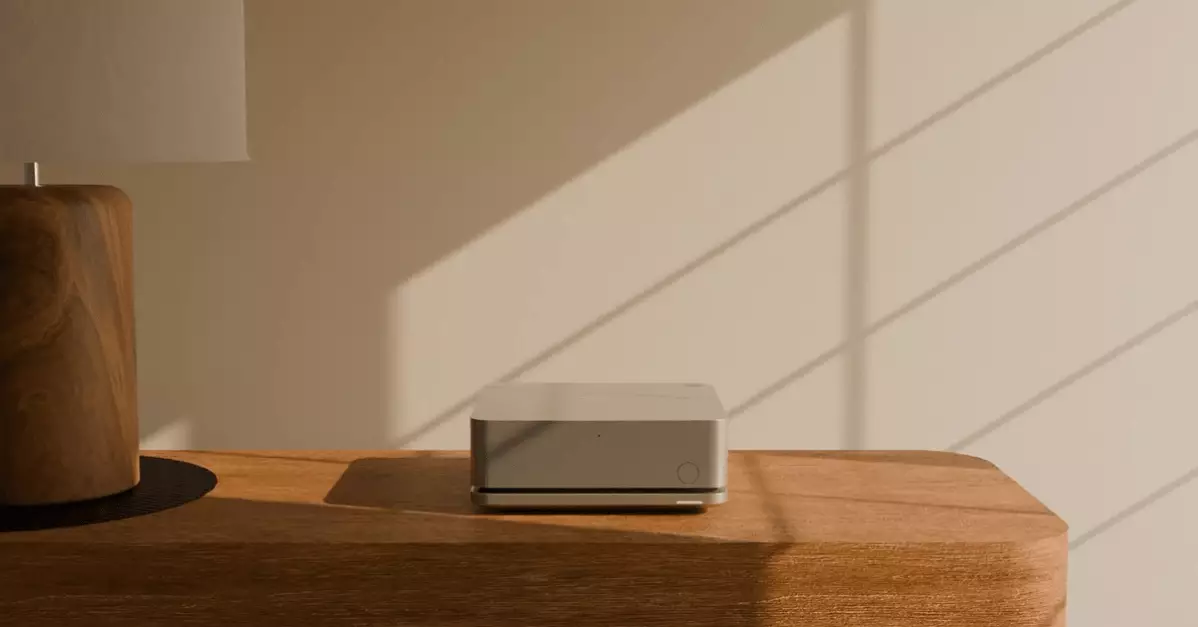In a rapidly evolving era where home health and wellness are becoming paramount, Ultrahuman has thrown its hat into the ring with a $549 device designed to meticulously monitor environmental factors affecting our everyday lives. While this innovative gadget—dubbed the Ultrahuman Home—shows promise, it also raises pivotal questions about its overall efficacy and practical value for consumers. As someone deeply immersed in tech advancements and smart living solutions, I find the arrival of this device both intriguing and simultaneously disappointing.
Features that Matter, but Limitations Abound
The Ultrahuman Home is designed to track essential variables like air quality, temperature, noise, light, and humidity. Arguably, these metrics are vital for anyone looking to maintain a healthy living space. The device’s ability to monitor particulate matter and chemical pollutants, coupled with detailed light exposure readings, illustrates its depth of functionality. However, the glaring absence of active response features—such as integrated air purification or humidity control—leaves much to be desired.
Indeed, it can tell you if indoor carbon monoxide levels are unhealthy or if your lighting aligns with your biological rhythm, but hypothetically, what good is this information if you can’t take actionable steps? In our tech-driven world, where smart home devices often communicate seamlessly, the Ultrahuman Home stands isolated, merely reporting problems without offering solutions.
Humans as Passive Observers
As a society, we increasingly rely on technology not just to inform us, but also to assist us in making decisions. The Ultrahuman Home’s passive role is a distinct drawback; it acts more like a vigilant observer than an active participant in our health optimization. After all, if a device can figure out when I’ve been disrupted by noise or light, why can’t it suggest or initiate countermeasures?
The potential of pairing the device with Ultrahuman’s Ring wearables for enhanced insights—which they market through their “UltraSync” feature—is commendable. However, this approach seems somewhat half-baked. Instead of being the proactive partner I envision, the Ultrahuman Home merely reiterates findings without taking the initiative to rectify them.
An Opportunity for Enhancement
For all its shortcomings, the Ultrahuman Home offers significant opportunities for improvement and expansion. Imagine a future version that not only alerts users of adverse conditions but also syncs seamlessly with existing smart home technologies. A version equipped with air purifiers and capable of adjusting light spectrums automatically in response to its readings could propel it to a whole new level.
This would not only enhance user experiences but also actively promote health and wellness by creating an environment that adapts to our needs, rather than simply pointing out flaws. Harnessing hardware and software capabilities in this way could redefine the concept of smart living, making our homes not just places of shelter, but havens of health and comfort.
While Ultrahuman’s Home device certainly taps into a crucial aspect of modern living, it ultimately risks being overshadowed by its inability to take on a more dynamic role in health improvement. The importance of marrying insight with action cannot be overstated, and therein lies a fertile ground for innovation.

